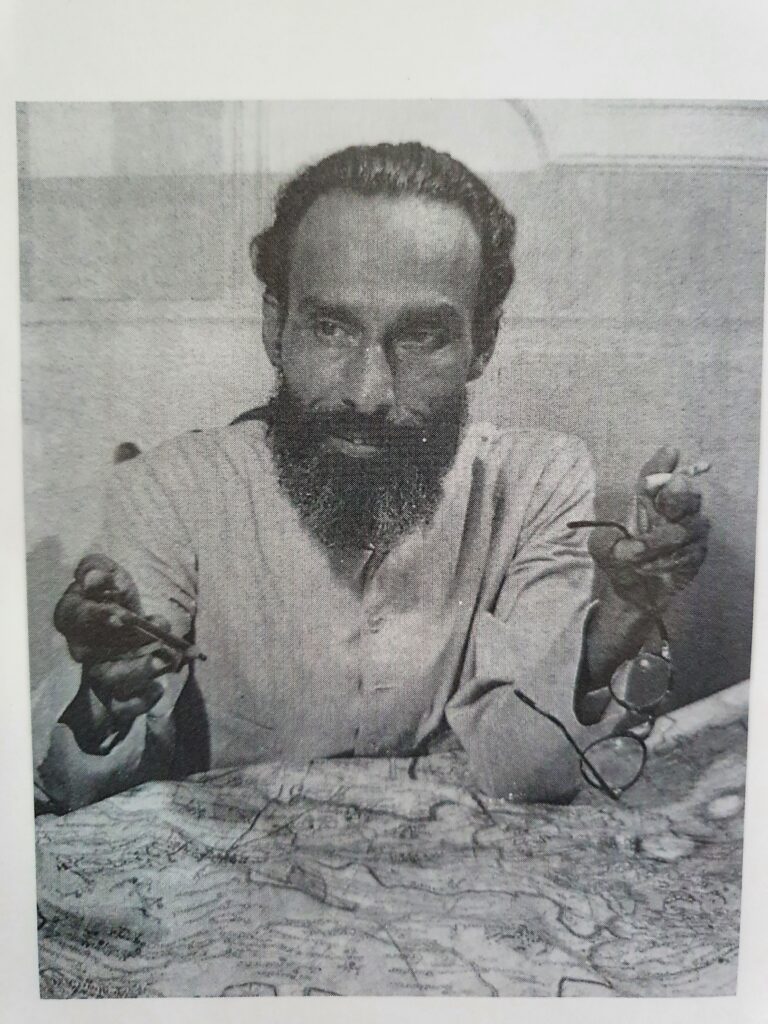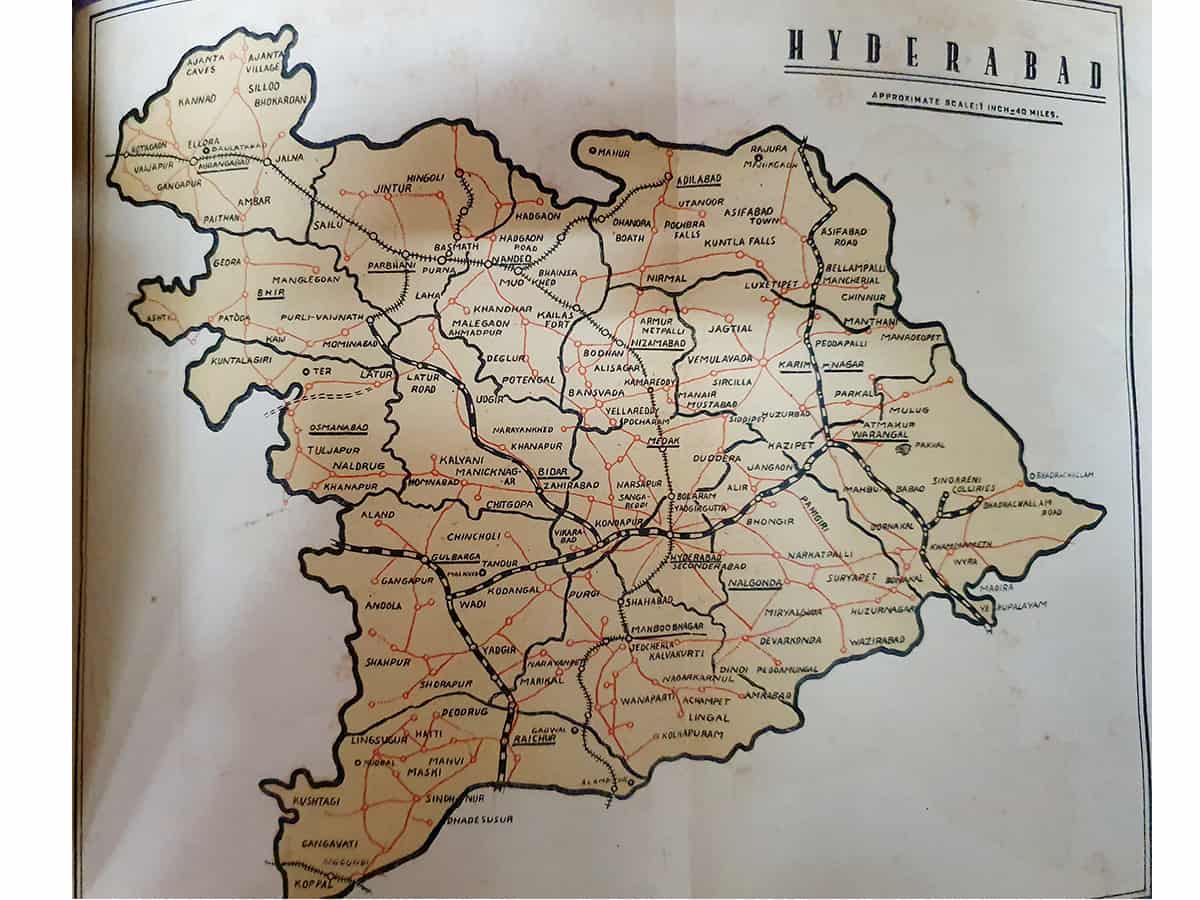Hyderabad: Every year the Bharatiya Janata Party’s state unit has been demanding the current Telangana Rashtra Samithi (TRS) government to observe ‘Liberation Day’ on September 17, 1948.
The term Liberation Day is a malicious term aimed at painting the Nizam’s rule as continuation of ‘occupation’ of formerly Princely State of Hyderabad.
The date marks the day when the erstwhile state of Hyderabad, which comprised Telangana and parts of Maharashtra and Karnataka, was annexed to India through the military action called Operation Polo or Police Action.
However, the irony of BJP’s demand is that it was literally a non-player in 1948 and in state politics then. Its ideological parent, the Rashtriya Swayamsevak Sangh (RSS), had been active, but its role was very limited given the fact that in Telangana it was the Communist Party of India (CPI) which had taken over most of the rural areas. The CPI in fact organised the ‘Telangana Armed Rebellion’ against state-appointed Jagirdars, the landholding class that comprised both Hindus and Muslims.
It was essentially an uprising against feudal landlords by peasants in the state. “The flip side of it is that the Telangana Armed Rebellion, which continued till 1951, is another reason the army had stayed back in Telangana, as the then Indian government headed by former PM Jawaharlal Nehru, were wary of the communists, who refused to lay down their arms
That resulted in the army going after the communists, due to which over 4000 CPI cadres were sent to jail until 1951. However, the matter was resolved after the CPI decided to call-off the struggle on October 21, 1951 (Telangana People’s Struggle and its lesson: P. Sundarayya) and contested the first general elections.
But there is a lot more to Police Action, given that at least 27000 to 40,000 Muslims died due to targeted communal killings in the Hyderabad state. So what started it all? Essentially, the problem started after Mir Osman Ali Khan, the last Nizam of the Hyderabad state, wanted to stay independent and not join the Indian union. Here is the entire event in sequence..
Nizam and his independence bid
Though the British formally left India in 1947, it however gave princely states and their monarchs the option to join India or Pakistan, or to stay independent. Osman Ali Khan was one of the handful of kings, like Hari Singh of Jammu and Kashmir, who wanted to stay independent. After all, he was a king of the largest princely state, Hyderabad, which comprised 16 districts in 1948 (8 in Telangana, 5 in Maharashtra and 3 in Karnataka).

It may be noted that Osman Ali Khan was also one of the richest men in the world, and was the king of a relatively peaceful state. However, the underbelly of it, especially in Telangana’s districts, was that of extreme oppression by state-appointed Jagirdars (landlords), whose main task was to collect revenue (taxes and rent) from farmers and give it to the state. The landlords were anything but benevolent.
Emergence of Qasim Razvi and the Razakars
After independence, Osman Ali Khan’s government and the Indian union began negotiating, with the latter being adamant about letting the Hyderabad state, which was surrounded by India, staying independent. The last Nizam on the other hand did his best to do exactly that. It led to both sides signing the ‘Standstill Agreement’ on November 1, 1947, for a year, to negotiate the issue at hand.

However, a separate parallel political power emerged in the Hyderabad state, in the form of Syed Qasim Razvi, a lawyer from Latur (Marathwada region in Maharashtra), who took over the reigns of the Majlis-e-Ittehadul Muslimeen (started in 1927) in 1946, after the death of Bahadur Yar Jung in 1944. Jung was one the MIM’s most powerful leaders and was a respected figure. It is hard to say what would have happened had he not died under suspicious circumstances (suspected poisoning).
One of the major reasons behind Police Action is believed to be the fanatical Qasim Razvi, who started the Razakar (volunteers) militia, and indulged in atrocities. The issue with Razvi was his violence. The late author Omar Khalidi in his seminal book ‘Hyderabad: After The Fall’ notes that, “Under Razavi’s charge the organisation (MIM) fairly quickly became a militant and somewhat frenzied party, accused, not without cause, of being fascist in both spirit and structure.”
Even in the book October Coup, author Mohammed Hyder, the last collector of Osmania district in the erstwhile state, writes that Razvi in private meetings argued that Muslims are meant to be rulers (which many disagreed with). Even the Nizam himself never uttered such words, and always maintained that both Muslims and Hindus were like his two eyes. However, historical blunders are always there for us to look back in retrospect.
Razakar violence against Hindus (and anyone opposed to Hyderabad’s independence), and Communist-backed uprisings by peasants against landlords in Telangana’s rural areas meant that the political situation in 1948 was in turmoil. In fact, the murder of Shoaibullah Khan, the editor of Imroze, an Urdu daily, best captures the situation then. Khan was murdered by Razakars during the intervening night of 22-23 August in 1948.
“They had cut his wrist off as an example for others, and had warned that they would do that to anyone who writes against the Nizam,” Burgula Narsing Rao (89), who witnessed the incident, told me during an interview. Khan’s Imroze used to function out of Rao’s home at Kachiguda. Rao is also the nephew of former Congress leader and first chief minister of the Hyderabad State, Burgula Ramakrishna Rao.
End of Telangana Armed Struggle
Vetti Chakiri (bonded labour) was also commonplace in rural Telangana, wherein lower-caste folks were forced to service the higher castes and the landowning class. More than that, the Nizam himself had directly owned 10% of the state’s lands, while 60% of it were revenue lands (Diwani), and 30% were under the Jagirdars (Telangana People’s Struggle and its lesson: P. Sundarayya).
Bonded labour and forced collections are believed to be the main reasons behind the uprising, which began in 1946, and officially ended in 1951, till the communists decided to contest elections. Some of the tallest CPI leaders from Telangana then were Makhdoom Mohiuddin, Ravi Narayan Reddy, Arutla Kamala Devi, Ch. Rajeshwar Rao, etc.
Many CPI leaders from Andhra, like P. SUndarayya and D. Venkateshwar Rao, also led the movement, which continued after Police Action. The older generation of the CPI believes that Police Action was initiated more to target communists then, than actually the Nizam. “We were the ones fighting the Razakars, and later the Indian army had come. Patel and Nehru were more worried about the Communists,” said M K, Moinuddin (93), a former Jagirdar and CPI legend who went underground in 1948.
Conclusion
While the Hyderabad administration, under its last Prime Minister Laik Ali, gave the Nizam the impression that things were going well, that was not the case. Finally, the Indian army came marching, with Police Action starting on 13 September 1948, and officially ending on 17 September 1948. Syed Ahmed El-Edroos, the last commander of the Hyderabad State Army, in his book Hyderabad Of The Seven Loaves, narrates the entire event.
El-Edroos who had the foresight to avoid bloodshed and save his troops, had surrendered. Lt. Col. J. N. Chaudhuri, who led Police Action, took over as military governor for 18 months, after which a provincial government under M. K. Vellodi existed till the first general elections. It may be noted that the last Nizam was made the Rajpramukh in 1950, while Razvi had been arrested and sent to jail for nearly a decade, after which he was allowed to leave for Pakistan.
Massacre of Muslims
While the annexation of Hyderabad itself is not an issue perhaps, the unfortunate fallout of it was the targeted killings of Muslims in the districts of Maharashtra and Karnataka. According to the Sunderlal Committee report (Pundit Sunderlal was appointed by former PM Jawaharlal Nehru to look into atrocities), 27000-40,000 Muslims had been killed in communal violence in districts like Gulbarga, Osmanabad, Bidar, etc.
This is the harsh reality of Police Action, which scarred generations of Muslims in Hyderabad city and other districts of the Hyderabad state. Mass displacement, led by discrimination followed. The best example is cited in the book October Coup, which details how the author, a civil servant, had to fight for his innocence.

